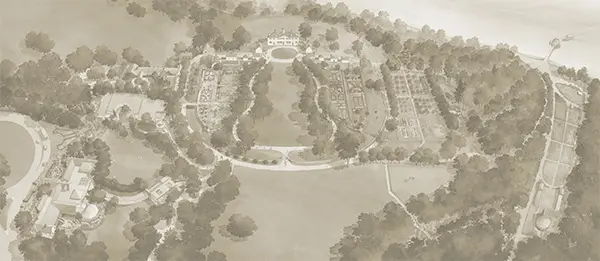A harbinger of spring, emerging foliage is deep purple but quickly turns green, and is followed by terminal clusters of pendulous, trumpet-shaped blue flowers. Virginia bluebells will rapidly colonize in moist shady areas. They are herbaceous perennials, which means that foliage dies to the ground as the plant goes dormant towards mid-summer.
Latin Name
Mertensia virginica
Family
Boraginaceae
Also Known As
Cowslip
Type of Plant
Seasons
Specifications
Uses
Sunlight Exposure
Colors
Native Range
Eastern North America
History
In 1734, plantsman John Custis of Williamsburg sent some Virginia bluebell rhizomes to his friend Peter Collinson in London.
Other Details
Planted at Mount Vernon


Hardiness Zones














Average annual extreme minimum temperature 1976-2005













Bartlett Tree Expert Company has been working with Mount Vernon Estate since 2011 providing expert arboricultural care and GPS mapping for the estate’s historic trees, as well as support from their research facility. Mount Vernon is proud to partner with Bartlett Tree Experts and appreciates their sponsorship of George Washington’s Mount Vernon Plant Finder App.
Bring Washington's Garden Home
Purchase our historic seeds, collected from plants grown at Mount Vernon and plant them in your own garden.
Shop Now

